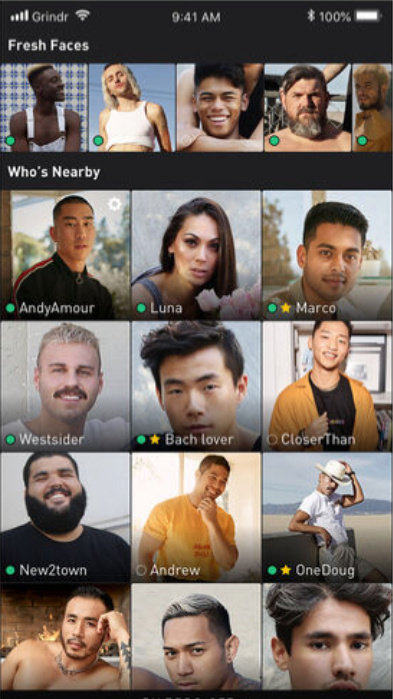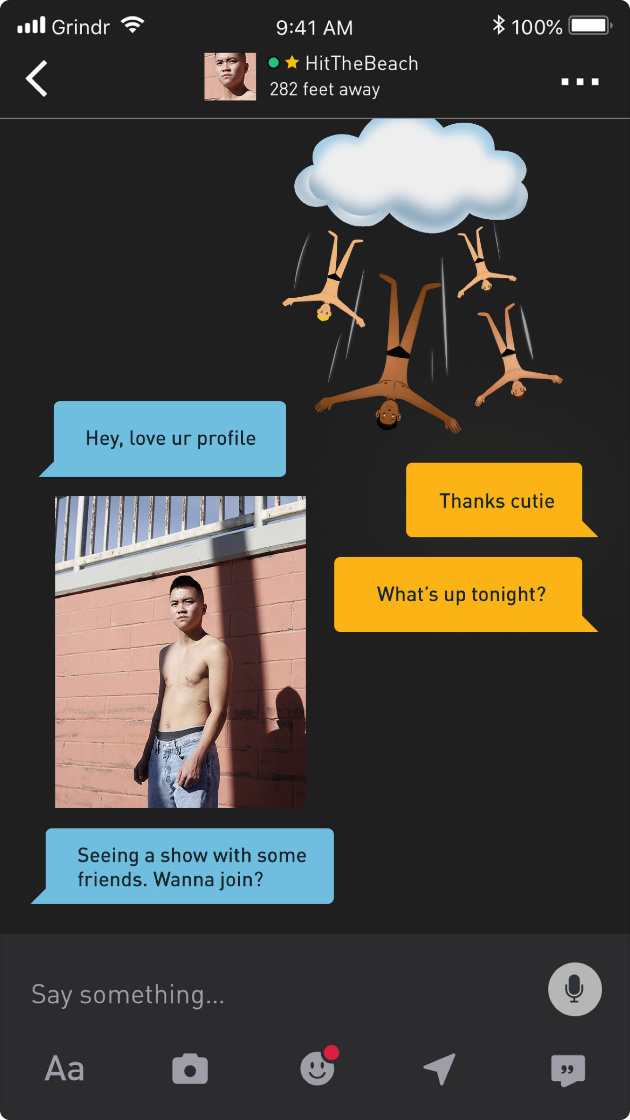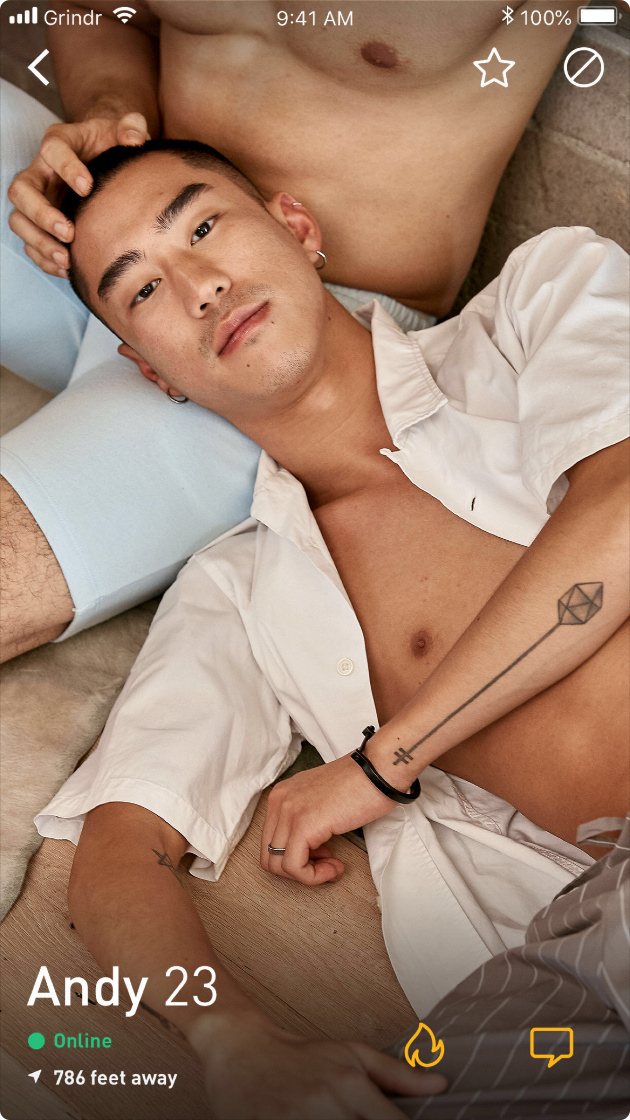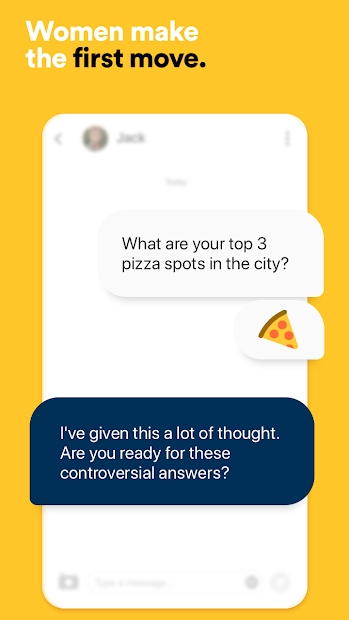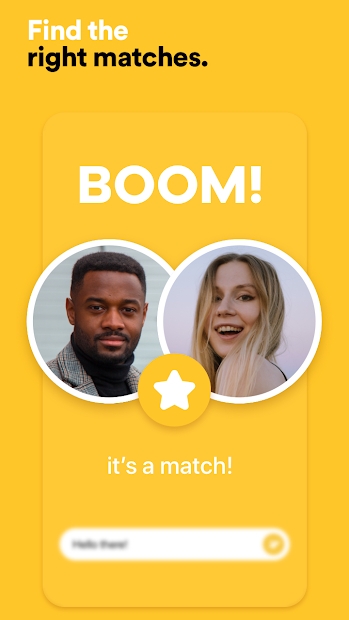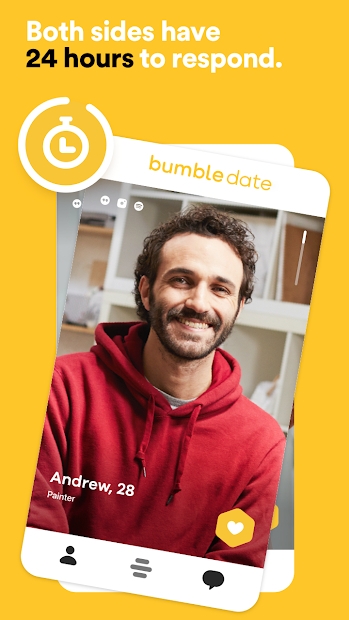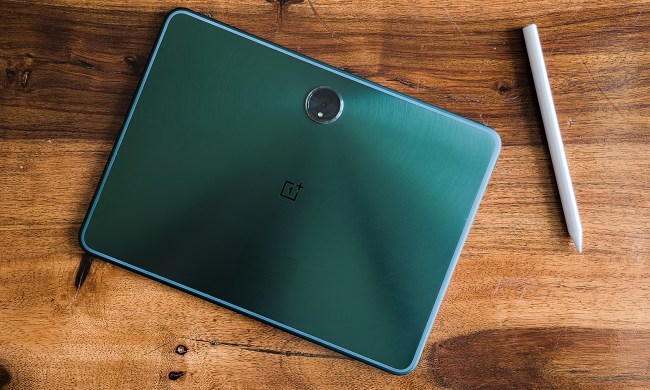Dating apps have quickly become one of the most popular ways for people to meet new romantic partners. With the sheer volume of apps available, however, it can be a little difficult to know which ones to pick if you’re looking for something new. While the likes of Tinder and Bumble have been on the scene for years, there are plenty of great, new apps popping up all the time that take slightly different approaches to helping people looking for love, or even just something quick and casual.
Luckily, regardless of whether you’re just getting into the dating scene or simply looking to try a new dating app after spending some time on one that doesn’t quite work for you, we’ve compiled a list of the best iPhone apps and Android apps that will help you find what you’re looking for. Whether you’re using the iPhone 16, Samsung Galaxy S24, or Google Pixel 9 Pro, remember it can take some time for you to really find your stride with a dating app. But if you pick one and find that it isn’t working in terms of your interests or desires, you can always delete it and try again with another one from this list.
Getting started with dating apps
If you’re totally new to the world of online dating, where do you start? That depends on a few factors, like your age and what you’re looking for from online dating.
Searching for a serious relationship? We’d recommend that you avoid apps typically aimed at hookups, like Tinder and Grindr, and opt for those with a paid membership. Apps like Match and Hinge tend to attract members looking for something more serious than a hookup. You could also download a local dating app such as Happn if you’re keen to discover potential dates in your neighborhood.
These same unofficial rules apply for older daters, too — paid apps tend to appeal to a more mature audience, so avoid gamification and “swipe left/right” apps in favor of those apps that ask you to include a bit more than just a picture on your profile. Those younger than 18 will often find most dating apps require you to be over 18 to use them — and although there’s often no age verification process, the requirement is for your own safety, so sticking to it is recommended.
OkCupid
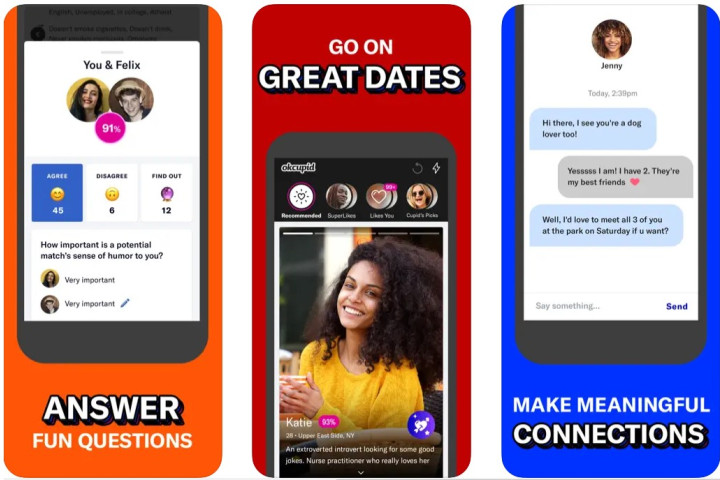
OkCupid was once one of the biggest names in the dating biz – and the desktop version has been around for what feels like forever (long before apps were even a thing). While reviews for the apps are fairly mixed, it still remains a very popular option as far as dating apps go. After creating a username, you’ll start your OkCupid journey by filling out a very long profile, which you can link to your Instagram account. You can answer questions, giving both your answer and what you’d like your potential match’s answer to be — creating a percentile score that reflects compatibility between users. You can choose to make your answers public and note how important they are to you, so prospective matches can see for themselves how compatible you’re likely to be.
All options, including those for accessing the settings and viewing profiles, are located in a slide-out menu. The Matches option lets you browse through potential matches, not those you’ve actually matched with. Alternatively, you can choose the Quickmatch option, which restricts the results to photos only. You can like people or message them in a similar fashion to Tinder, but messaging is your better bet: Users can see who has liked them only if they have upgraded to OKCupid Basic, which costs $35 a month or $105 for six months and also gives you unlimited likes, removes ads, and unlocks all intros at once.
It’s not perfect. OkCupid has as many downsides as Tinder, and fewer positive ones, with the exception of learning a lot more about your potential dating partners. The interface is extremely clunky and the photos are a little small. You also have to tap on a user’s small image to see a larger version and the person’s profile, which is simply too large for an app. It works on a website, but it’s overkill on an app, and the amount of scrolling required makes it annoying to access. When you exit back to the list, there’s no guarantee that it’ll be in the same order or that it will return you to the spot you scrolled down to, making it extremely hard to keep track of what you’ve already viewed.
Keep in mind that anyone can message you. And they can message anything to you. If you don’t reply, they’ll probably just keep on messaging you too. It lacks Facebook verification, which means OkCupid loses a level of reliability, as verification helps block a percentage of bots and catfishers from creating accounts. It’s worth noting that if you’re having issues with unwanted messages, you can subscribe to Incognito Mode, which hides your profile from anyone on the site you’ve not already messaged or liked — it also removes ads, and you can turn it on and off at any time.
Tinder
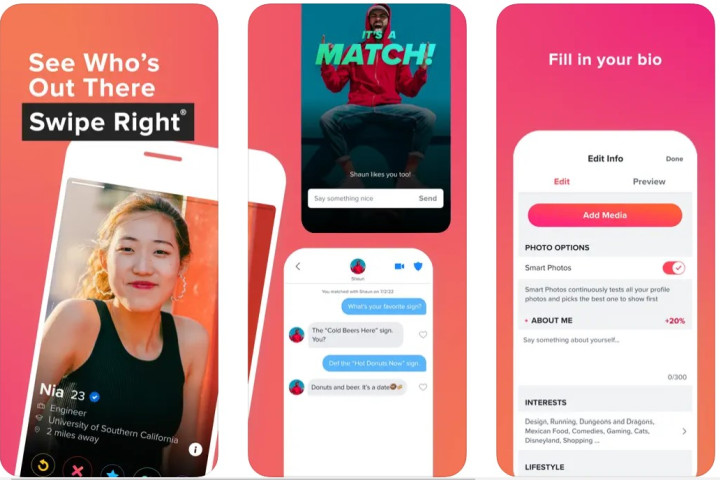
Tinder is one of the most famous dating apps out there. As successful as it is at forming long-distance relationships and enduring marriages, Tinder has long been accused of changing dating into some form of hookup game. But it’s the king of the dating hill for a reason and the first port of call for many.
The Tinder app no longer requires you to have a Facebook account, but you do have to be older than 18 to sign up. You’ll set up a concise profile that consists of a 500-character bio and up to six images (we suggest always including a photo of yourself doing something fun with friends, or your best selfie). You can also link Tinder to your Instagram account and include info about your employer and/or school. Discovery settings allow you to set preferences for who can find your profile, from distance and proximity to age range. But once that’s over, the real fun begins.
Tinder’s interface is svelte and shows you only a photo, name, and age of each potential match. You can tap on the photo to see additional information about the person, as well as Facebook friends you share (if you’re logged in through your Facebook account). You can then swipe right (to like them), left (to pass), or up if you want to use one of your precious “super likes” to show them you really, really like them. If you and another person have both swiped right on one another, a screen will appear showing you’ve matched and inviting you to send them a message. There’s also a video chat option that lets you check out your match before meeting in person. Free membership comes with limited swipes. Tinder has three tiers: Tinder Plus for $25 monthly, Tinder Gold for $40, and Tinder Platinum for $50. Additionally, Tinder Select is an invite-only plan that costs $499 a month – all have varying features that you can pay more for per tier.
The photos are large, the app is — comparatively speaking — elegant, and setting up your profile is pretty painless. All things considered, Tinder gets an A for its usability. Also, no one can message you unless you have also expressed an interest in them, which means you get no unsolicited messages.
Grindr
If you’re gay, bi, trans, or queer, then there’s no better place to find love than Grindr. It’s the largest LGBTQ dating app and dating site out there, and it’s a must-download if you’re looking for that special someone or just looking for fun. Signing up is easy. You can either enter your details the old-fashioned way by filling in the form, or you can quickly sign up with your Facebook account. Once you’re signed up, you’ll want to set a profile picture and a display name, and make it clear whether you’re looking for love, a hookup, or just friends.
With that out of the way, you’ll be able to start seeing who’s in your area. You can favorite people if you want to speak to them later or just really like them, and you can even browse other locations. It’s easy to message people — just tap the Messaging icon on their profile. You can even location-share for really easy meetups. If something goes wrong, it’s also easy to report or block accounts, though there are a limited number of blocks for free users, which is odd and a serious turnoff.
Free users only get to see 100 profiles in their area and are limited in other parts of the app, too. If you want to lift those limits, then there are two subscriptions you can take out. The first, Grindr XTRA, is allows you to see up to 600 profiles in your area, view people who are online now, remove ads, and add other upgrades for $20 a month. Grindr Unlimited lets you unlock exclusive features like unlimited profile viewing, information on who’s viewed your profile, the ability to unsend messages and photos, incognito viewing, and typing status. The newest features include chat translation, expiring photos, and all the other features that come with Grindr XTRA. Grindr XTRA is $20, while Unlimited is $40.
Coffee Meets Bagel
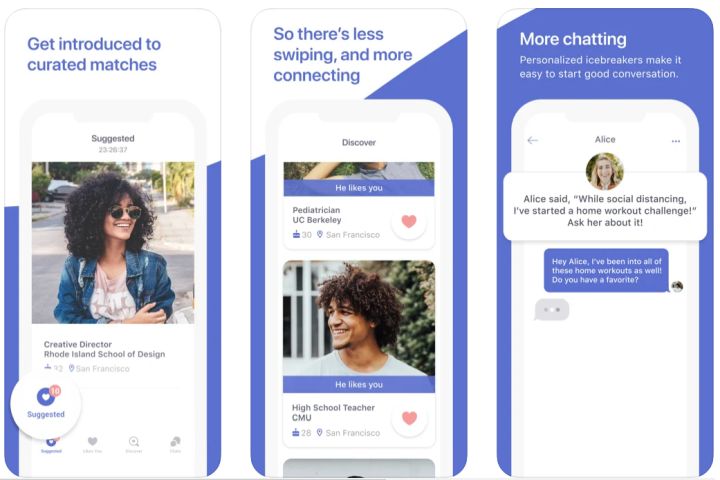
Coffee Meets Bagel used to require Facebook to create an account, but that’s no longer the case. Instead, you’ll need to use your phone number to verify yourself. Once you’ve set up your profile and input your dating preferences, Coffee Meets Bagel will send you a few “bagels” a day, which are potential match profiles.
You then have 24 hours to decide whether you want to “like” or “pass” on your bagel. If you like your bagel and they have also liked you, you’ll connect and be able to message one another in a private chat. That chat room expires after eight days, regardless of whether you’ve talked with your bagel or not, and that expiration date imbues an immediacy not found in most other dating apps. You can also earn “beans” that allow for extra app functions, either by purchasing them outright, recommending the app to your friends, or logging in on consecutive days.
The service also offers more specific preference options, so you can narrow choices to certain religious beliefs or ethnicities. You can load up to nine photos and create a much more prolific profile than some other apps. And if you’ve entered any icebreakers into your profile, the app will send one of them to a bagel you’ve connected with as the first message, allowing for a convenient, immediate connection. The fact that chat rooms expire after a week puts some pressure on you to exchange phone numbers or meet up in real life, or you can just quietly fade away without any fuss.
You can subscribe to Premium for $35 per month, $75 for three months, $120 for six months, or $180 for 12 months. This gives you access to read receipts, so you won’t waste time wondering whether your potential match has read your messages, as well as activity reports, which show you how your potential match interacts with the app — and whether they’re likely to make the first move. The in-app currency, called “beans”, runs about $0.02 per credit, with 100 credits available at $2 and up.
Although Coffee Meets Bagel allows for a range of super-specific preferences, the bagel it sends you may or may not match your specified preferences, and, more often than not, if they do, they will be a significant distance away. The app can also be glitchy, often resulting in slow update and load times, and sometimes it’s frustrating that it sends you only a single bagel a day. You can speed things up a bit by using the Give & Take option, but it’ll cost you a hefty 385 beans to like someone who catches your eye. This can quickly become quite expensive, especially if you’re doing it often.
Despite the expiration of bagels, the slow pace and infrequency of connecting with potential matches make it all too easy to be super-passive with the app, which can render it useless. However, if you prefer a slower pace, then Coffee Meets Bagel is appealing.
Hinge
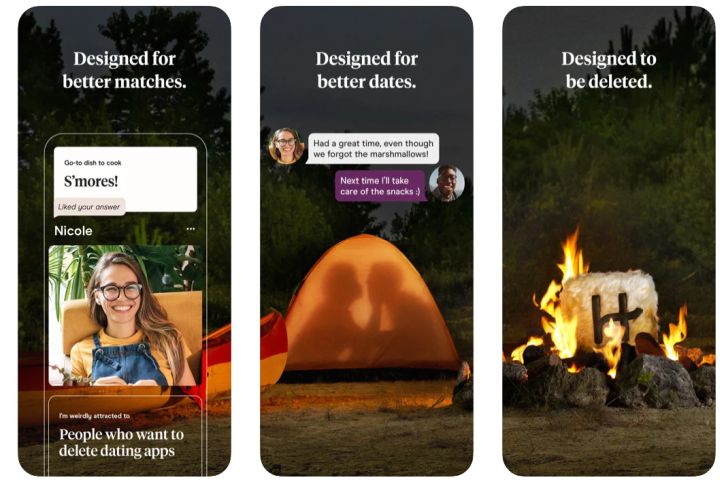
Hinge looks very similar to Tinder at first blush. But dive a little deeper, and you’ll find that it’s actually quiet different. It uses common interests to pair with prospective matches. It does this by having you answer a bunch of questions through a Tinder-like interface that you can swipe through. This makes answering questions far easier and less time-consuming, not to mention more fun. The questions themselves aren’t as asinine as those in some other dating apps, and they give you a better sense of someone than 500 characters of description can.
People can message you only if you’ve matched, so there are no unsolicited greetings. You can immediately see what sort of relationship people are looking for, and while that doesn’t sound revolutionary, it reflects the fact that Hinge carries more of a dating expectation than a hookup expectation à la Tinder. Best of all, since the matches are curated by your answers to questions, it’s quite a bit harder to come across someone who’s just looking to send inappropriate pictures — and that’s a big plus in our book.
You can add photos of yourself from Facebook, Instagram, or your camera roll. Like other apps, there’s a free version and a subscription-based version called Preferred. The free membership has limited filters and likes and a reduced ability to see everyone who likes you. The paid membership lifts those restrictions and costs $13 a month, with a reduced fee per month if you sign on for three or six months.
Recently added features include video chat and the Video Prompts feature, which you can open from the corner of your screen during a video call. Video Prompts is designed to help you kickstart a conversation and share your interests and personality. You can select from one of eight unique conversation themes and you’ll be presented with five Prompts to ask each other, from “getting to know you” questions to interactive Prompts that take you on mini scavenger hunts around your home.
Match
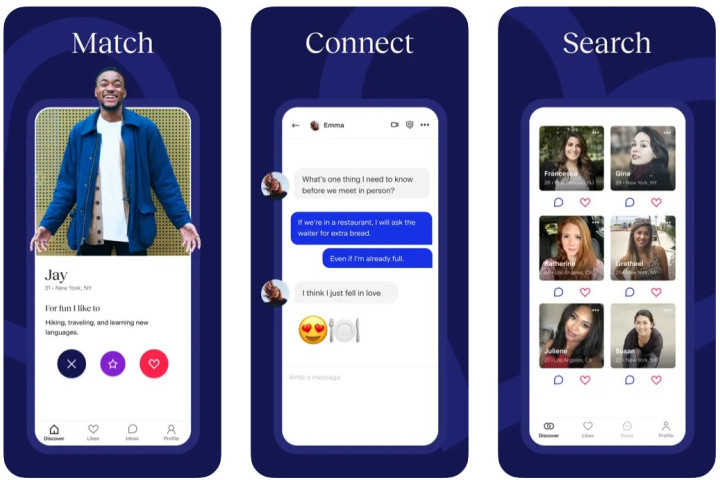
There was no way we could discuss the best dating apps without mentioning the granddaddy of them all. Match was at the top of the dating game long before dating apps like Tinder existed, and its experience shows. Signup is simple but can take a little time — it involves entering your details, answering a few questions about your preferences, and adding a couple of photos. Facebook registration isn’t needed, thankfully.
Match’s version of flirting is sending someone a “wink,” and you can search through the Match database to find winkable people. The service will also provide you with daily personalized matches, which take your interests into consideration. There’s also a personalized dating coach that sends recommendations of people who match your desires — one of the most popular features mentioned in user reviews. The Match interface is also pretty sleek and minimalist, but it’s not as easy to use as, say, Tinder. It uses a set of tabs that run along the top of the display (Matches, Search, Viewed Me, and Mixer), which break up the service’s various functions. It’s not an overly complicated app, but it does take a few minutes to get used to.
However, to make the most of Match, you’re going to need a subscription, which can get a little pricey — the cheapest option currently available will run you $16 a month for 12 months. If you don’t want to sign up for a year, it’ll cost $28 a month for three months or $20 a month for six months. Is it worth it? Probably — a premium subscription does allow you to see who’s recently looked at your profile and who has liked your pictures, and it includes a host of other features.
The app’s latest updates include the option to start free conversations with your Top Picks.
Bumble
Bumble looks eerily similar to Tinder but functions a tad differently. The big catch with Bumble is that when opposite genders match, the woman must message the guy first — and she only has 24 hours to do so. Guys don’t have as much power, but they can extend matches for 24 hours if they’re really hoping to hear from a particular woman. Ladies can do the same thing if they want to chat with a match but haven’t had time during the first day. For same-gender matches, either person can initiate the conversation first.
It’s a system that promotes an active approach, but not enough to be punishing. The 24-hour time limit to connect with someone adds just enough pressure to start a conversation, so matches don’t languish and get reshuffled into the deck. And if you accidentally nixed someone, just shake your phone to undo your rogue swipe. Profiles are concise, and settings are pared down, like with Tinder, and swiping up allows you to scroll through additional photos.
Bumble also checks the boxes for usability, a slick user interface, and easy profile setup. It’s the only app that states plainly and prominently that it prohibits pornographic material, requires its users to respect one another, and has a code of conduct in place specifically to make it a safe and friendly place. However, since Bumble places the onus on the woman to initiate the conversation, we’ve found that it can attract a more passive crowd than other dating apps. However, if you’re a woman who knows what she wants and isn’t afraid to get it, Bumble is worth a shot.
Bumble recently added in-app voice and video chat functions, as well as the option to send audio notes if you don’t fancy chatting in real-time. Bumble Premium is available as well, which lets you see who liked you first, use special features to find more matches, backtrack on accidental swipes, rematch with expired connections, and more – but it will run you $17 per month.
Happn
How often do you cross paths with the love of your life before you actually meet them? Maybe you smile at your crush every day when you get your morning coffee, but you’ve never built up the courage to talk. If so, Happn could be for you. It’s a dating app that shows the profiles of other singles and pinpoints the last place and time you were near each other. All your prospective matches are people you’ve crossed paths with, so you’re always starting out with something in common.
You can like people secretly, and they won’t find out unless they like you, too. If you’re comfortable being bolder, you can tap the Charm button to let them know you’re interested. However, Charms cost coins, which you’ll have to buy with real cash via in-app purchases. When you get a match — which Happn calls a Crush — you can start chatting with each other.
It’s very quick and easy to set up and use. The profile creation is pretty standard. You add photos, age, profession, and interests, and you can also specify what you like doing, whether that’s taking a walk in the park, seeing a movie, or going for a drink. Happn also has some nifty integrations — you can use Facebook to set up your profile, hook up your Instagram account to automatically add photos, and add Spotify to see if your musical tastes align with matches.
Happn uses your phone’s GPS to track your movements. If you’ve been within 800 feet of a potential match, then you’ll see their profile. For that reason, it works best for city dwellers. People can’t contact you unless you tap the heart icon on their profile. Happn never displays your position to other users in real-time, and you can also block users if you have stalking concerns.
Plenty of Fish

Plenty of Fish is one of the oldest dating services out there, and it’s certainly the biggest after hitting 90 million users in May 2017. With that many users, you’re more likely to find matches quicker. Plenty of Fish itself likes to point that out, saying that users are 2.7 times more likely to be matched in their first 24 hours.
That sort of massive following is a selling point in itself, but Plenty of Fish has more going for it than just pure size. It takes things that work for other apps and includes them in its own, adding Tinder’s swiping mechanics and a Happn-style ability to see matches near to you. It does have its own little twists on the formula — the Spark system allows users to quote any part of their match’s profile, so icebreakers are much easier when you can see what a message is referencing.
Much like other dating apps, Plenty of Fish has you take a chemistry test of your likes and dislikes, and it quizzes you about your wants and needs from a relationship, so you can be sure that you’re likely to be matched with people who are looking for similar outcomes to your own. Best of all, it’s completely free and doesn’t charge to message or browse your matches. That makes it the ideal app to download if you’re on the market but aren’t actively searching for love. And if you’re going out of your way to find someone, Plenty of Fish may have your perfect catch. However, the signup process is pretty lengthy, and the layout is rather fiddly on mobile.
There are multiple membership tiers to subscribe to as well, if the free version isn’t working for you, with options from POF Plus for $43 and POF Premium for $65 to and POF Prestige for $33, which is only available for iOS users.
Pure
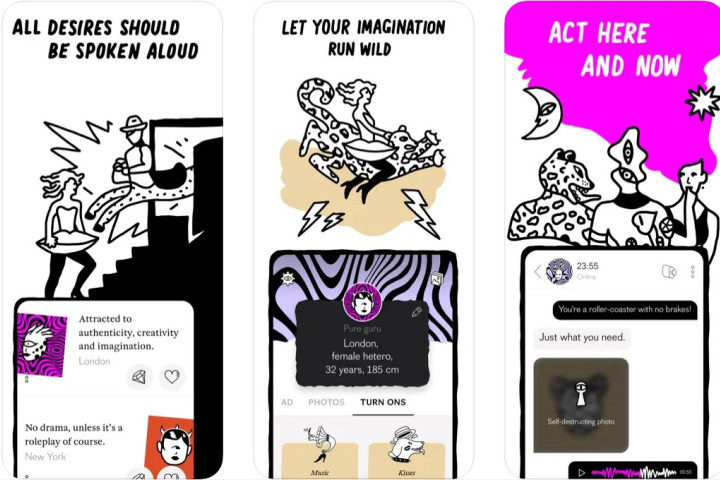
OK, so Pure is designed for hookups rather than serious dating, but don’t judge a book by its cover — or, in this case, an app by its intended purpose. Pure is for those who prefer their dating life with no strings attached, so if that’s you — we’re not judging — then it’s well worth checking the app out. Designed with some pretty cool art, there’s a millennial vibe to Pure — and it’s a space for over-18s only, with a strict no nude photos rule.
When signing up, the app asks for your phone number to prove you’re a real person and uses your location to find potential matches — or you can sign up with your Apple ID on the iOS app. Make sure you outline what you’re looking for when creating your bio — as well as mention any boundaries. The aim here is anonymous, spur-of-the-moment connections, so your bio, selfies, matches, conversations, and likes automatically self-destruct every 24 hours, and they’re only visible to others when you’re online.
The user base right now is admittedly a little sparse, so unless you live in a major city, you might strike out with Pure. On the plus side, a smaller user base means fewer bots and people trying to scam you. On the downside, retyping your bio and uploading your photos every 24 hours can get old pretty fast, but it’s great if you prefer your apps with no strings attached. You can communicate with anybody who messages you for free, but to see other profiles, you’ll need to upgrade to Pro for $13 per week or $30 a month.
Pure also features a video chat, where you can enjoy a totally anonymous video chat and opt to “wear” a virtual mask to hide your identity, giving you the opportunity to get to know your match a little better before deciding to meet up in person.
Do dating apps really work?
When it comes to whether or not dating apps actually work, the answer falls to each individual’s experience. There are plenty of stories of people meeting their future husbands and wives on dating apps, and at the other extreme, horror stories of online dates gone wrong — but neither necessarily represents the average person’s experience of dating apps. Dating can be filled with joy and heartbreak, so those sorts of complicated emotions come hand-in-hand with the territory of dating.
The majority of daters in the U.S. report a positive experience with dating apps, but it’s true that to some extent your level of success hinges on choosing the right app for what you’re looking for — and you get out what you put in. Spend time perfecting your dating profile, and, crucially, being honest about yourself and what you’re looking for, and you’re likely to see results. Whether you’ll meet The One on a dating app, we really can’t say, but you will meet people you may never have encountered in everyday life — and it’s worth a shot, right?

